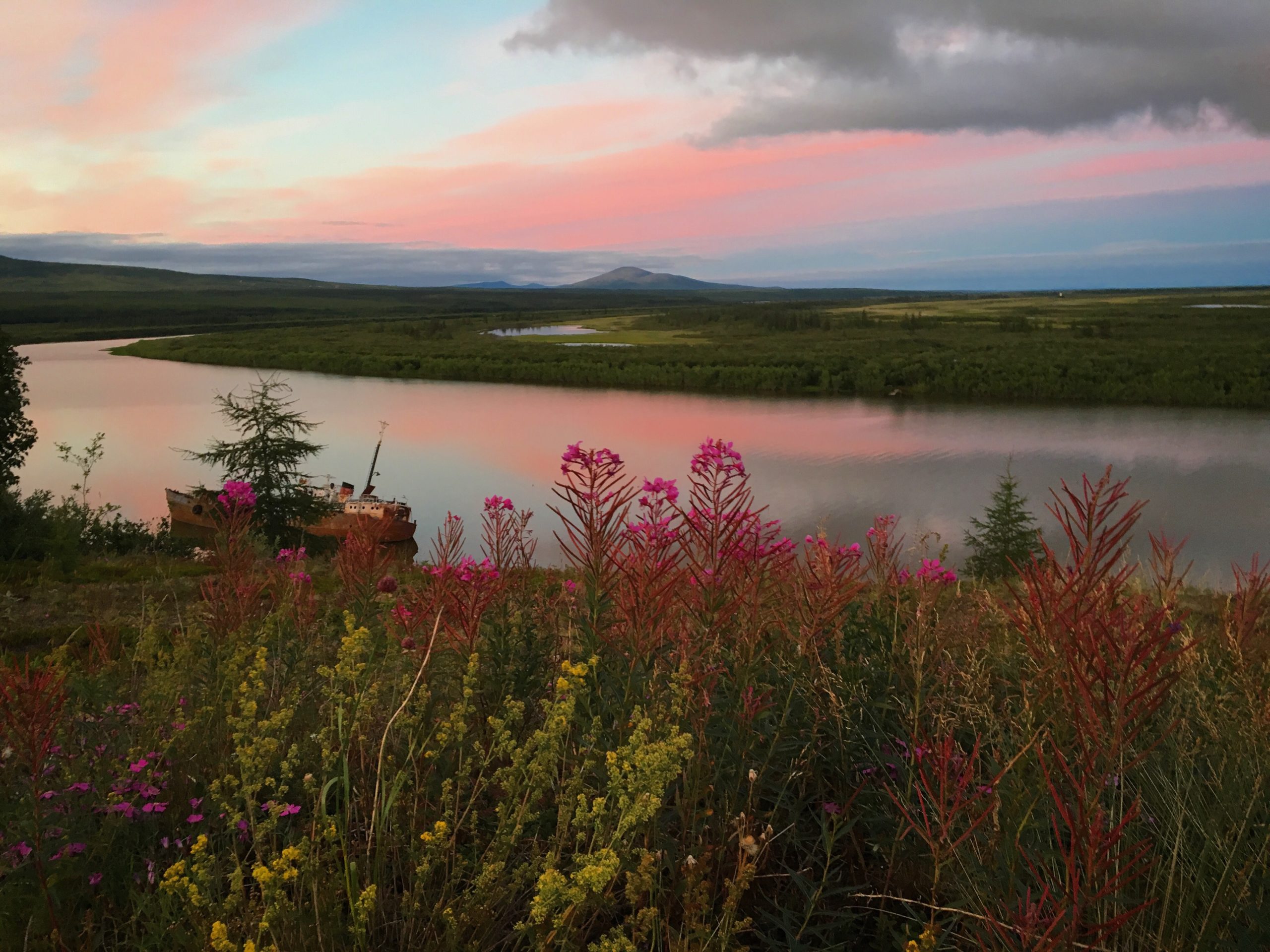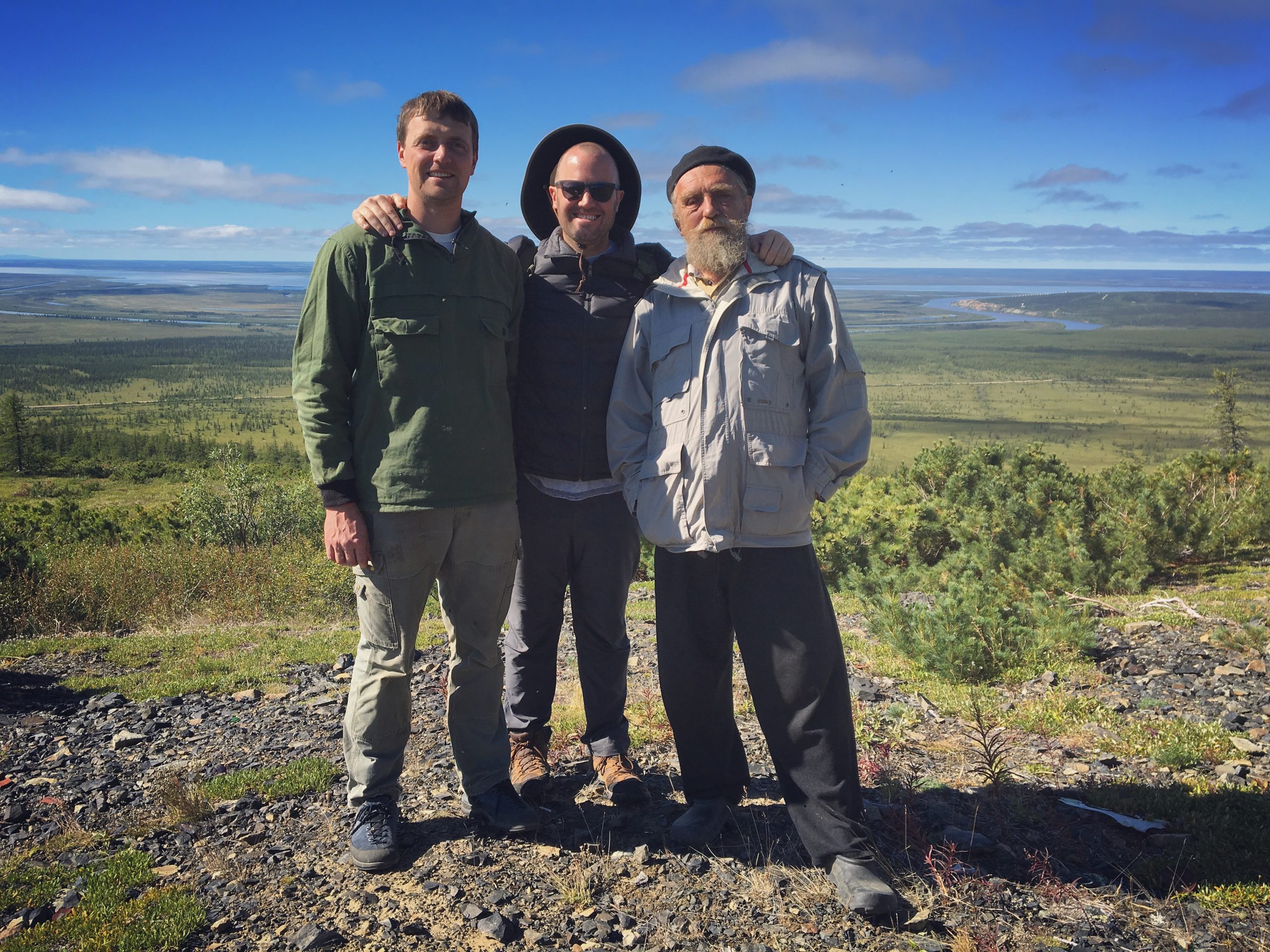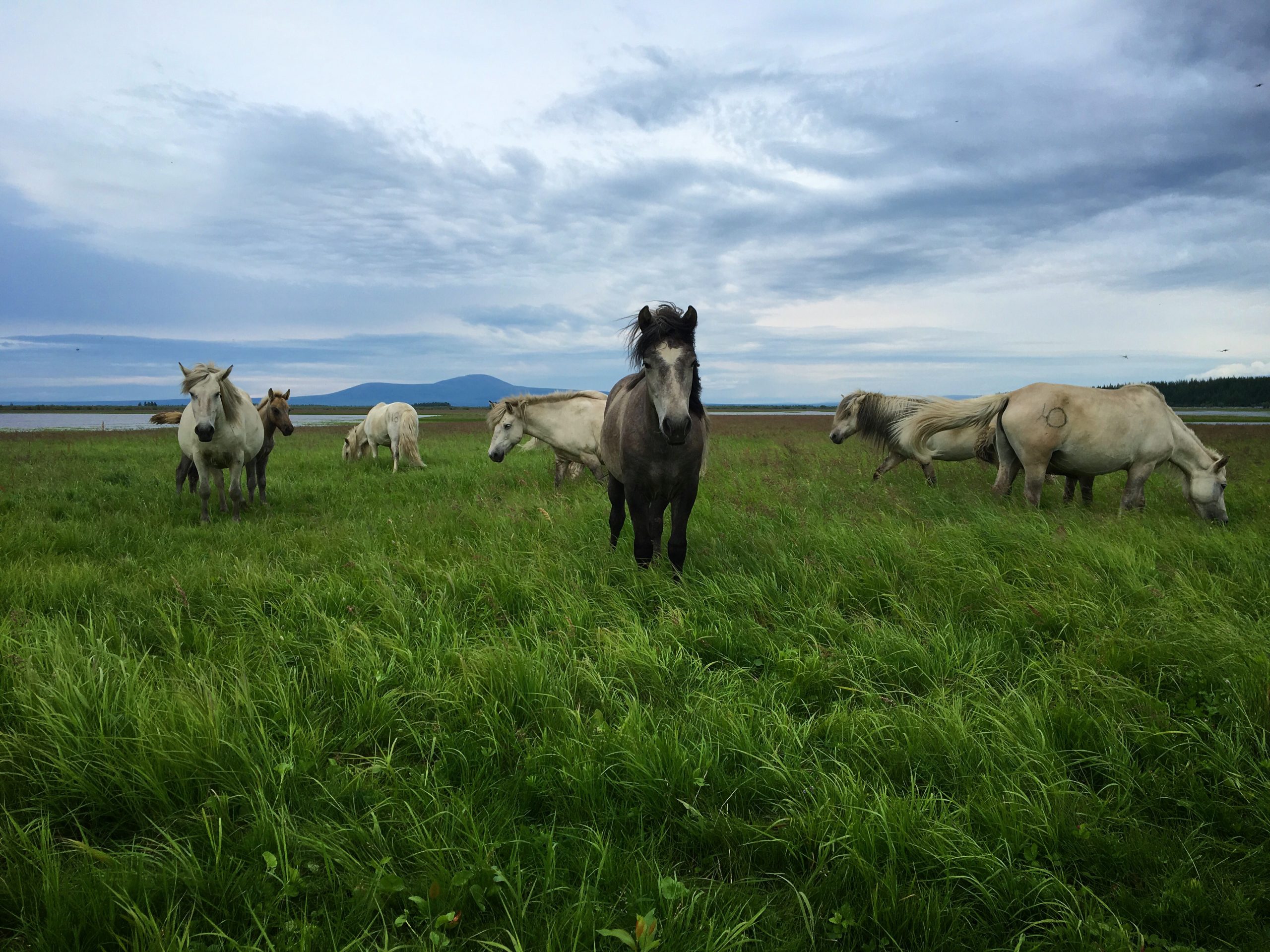
Humans have been telling stories about themselves on cosmic timescales for at least a few millennia. But these narratives are usually found in epic poems, in the doctrines of the world’s religions, and maybe in a few branches of theoretical physics. Few magazine journalists are willing to tackle mythic topics like resurrection, the biblical flood, original sin, sons making sacrifices for their fathers, the beginnings and the ends of ice ages, and the ultimate fate of humanity—especially not in one story.
But stories of biblical proportions are the ones The Atlantic’s Ross Andersen likes best. When he was deputy editor of Aeon, he wrote immersive narratives about cosmic beginnings, the false permanence of the stars, everlasting trees, and the next planet we might call home. As a senior editor at The Atlantic, he’s written about interstellar travel, the natural history of pollen grains, and, most recently, an ambitious project in the Siberian Arctic to resurrect the last ice age. His feature “Welcome to Pleistocene Park” appeared in the April issue of the magazine.
The story focuses on a father and son, Sergey and Nikita Zimov, who are trying to bring back an ice age ecosystem. According to their theory, the presence of boreal forests will make it harder to fight warming that threatens the Arctic, including the potentially devastating melt of permafrost. Instead, they want to bring back grasslands, which would more easily accept a thick coat of white, sun-reflecting snow. The layers of cold would help permafrost stay frozen. But the Zimovs can’t do it alone. To trample enough young trees to reestablish the Arctic grassland ecosystem, the Zimovs need giant herbivores—especially woolly mammoths.
These charismatic creatures, a relative of modern elephants, are one of the most common characters in stories about biotechnology’s potential to resurrect extinct species. By “flying along the rails of the Asian elephant’s double helix,” as Andersen puts it, geneticists can make subtle tweaks that introduce mammoth traits, effectively bringing the species back to life. By far the easiest way to make these tweaks would be using the revolutionary gene-editing tool CRISPR. Many magazines have covered CRISPR’s potential power to transform medicine and entire ecosystems. But in the Zimovs’ imagination, the genetic editing technique is in service of a much broader idea: staving off climate change by resurrecting not only mammoths but also the Pleistocene era in which they evolved. Andersen writes:
Pleistocene Park is named for the geological epoch that ended only 12,000 years ago, having begun 2.6 million years earlier. Though colloquially known as the Ice Age, the Pleistocene could easily be called the Grass Age. Even during its deepest chills, when thick, blue-veined glaciers were bearing down on the Mediterranean, huge swaths of the planet were coated in grasslands. In Beringia, the Arctic belt that stretches across Siberia, all of Alaska, and much of Canada’s Yukon, these vast plains of green and gold gave rise to a new biome, a cold-weather version of the African savanna called the Mammoth Steppe. But when the Ice Age ended, many of the grasslands vanished under mysterious circumstances, along with most of the giant species with whom we once shared this Earth.
Andersen traveled to Arctic Siberia for the story in July 2016, and spent several months afterward writing and revising. Like Sergey Zimov, he says, he experiences “solastalgia,” a longing for a vanished landscape.

“One of the things that’s so appealing to me about deep time as an editorial frame is that it opens you up to this broader category of longing—to landscapes, and places across the cosmos that are remote from us in time, and even in the far future,” he says. “Those are hugely powerful emotions to me, and something that I try to both summon and nourish when I’m in the writing process.”
Here, Andersen tells Rebecca Boyle (who is also an Atlantic contributor) how he approached a story with such a broad, mythic scope. (This interview has been edited for length and clarity.)
First of all, how did you come up with the idea for this story? And was it your goal from the start to touch on all of these heavy themes, like fathers and sons, hubris and hope, climate change and deep time?
Don Peck, who’s our deputy editor on our print mag side, and I were talking about science stories and he mentioned that he had his eye on this place, Pleistocene Park, which I had been ambiently familiar with for a few years. I think I’d been to the website a few times. We were sitting at lunch, and he was describing it to me, and I thought, this is in my wheelhouse. I have written a series of stories now that have to do with humans interacting with longer—even cosmic—time scales, and so the idea of someone trying to resurrect an entire Ice Age biome was particularly attractive to me.
I started doing some digging into Sergey Zimov’s work, who is one of the two main characters, the father in this father-son duo. I wrote up a one-page treatment describing some of the themes that I found interesting. And [Peck and the editors] said, “Great. Book a ticket to Siberia.” So off I went.
From the beginning, I saw this as a uniquely Anthropocene story, and in quite a powerful way, because of some of the back material dealing with the paleoanthropology around the overkill hypothesis—this idea that all these megafauna, like mammoths and so forth, were hunted out by humans. And it was really appealing to me as a creative project to trace an arc from all that prehistoric stuff on through to this experiment, and to have these encounters with the woolly mammoth interspersed throughout. And I was interested in the father-son relationship; from the first time I talked to Nikita, the son, I could tell there was something rich there.

How did you corral all of those lofty themes into a coherent narrative?
As a general approach, I really like to think about a subject as broadly and multidimensionally as possible. And then I try to see how much my editor will let me cram into there. That’s what I did with this story, and it definitely led to some structural challenges. I had the most trouble thinking about how to structure the first third of the piece, given how much explanatory work had to be done. There was so much to explain—with the permafrost, climate change, the father-son dynamic, the prehistoric human story, the ecology of the Arctic, the first-person travel narrative—and all without losing speed. I really labored over the lede. Most stories, you like to know what the lede is right away, but this one took me a while.
I was going to ask you about the lede. It’s funny, and it puts you right in the middle of the central idea in the story, in a way that I almost noticed more on a second reading. You’re with Nikita Zimov, knocking over trees in this tank-like vehicle that he calls a “baby mammoth”—but it wasn’t until later in the story that I really got why he called it that. There’s a much deeper story in that paragraph than the arresting fact that he’s toppling some saplings.
I am so thrilled to hear that. That is precisely the kind of duality that I wanted there. I wanted it to be this really immersive narrative moment, while also touching on many of the themes that you see fleshed out later in the piece. When he says, at the close of that opening scene, “In general, I like trees, but here they’re against our theory,” I thought that was the perfect way to show how very serious these guys were. There was just something about it that really made me laugh.
One of the reasons the opener was tough is that it’s usually my preference to open on a conceptual lead. There’s a paragraph later in the piece where I describe what winter is like in the Arctic, with ice coming over the Arctic Ocean. That was the original lede, and my plan there was to basically sketch the landscape as viewed from space for the reader, to put them there.
Every Arctic winter is an Ice Age in miniature. In late September, the sky darkens and the ice sheet atop the North Pole expands, spreading a surface freeze across the seas of the Arctic Ocean, like a cataract dilating over a blue iris. In October, the freeze hits Siberia’s north coast and continues into the land, sandwiching the soil between surface snowpack and subterranean frost. …
But then as I was playing with it, I realized it was sort of an indulgent, writerly thing to want to start with that, and that part of the sex appeal of the story is having gone to Siberia, and that I needed to put the reader in the first-person experience of being in Siberia in the first sentence. We needed to be having an adventure right away, and let the reader be carried along by that before I got into my own conceptual preoccupations.
Can you talk about how you figured out how to structure this story?
It was tough. Richard Todd—a former Atlantic editor, incidentally—used to say that you should almost always tell your story in chronological order, and I tend to agree. In this case, I had two chronologies—my experience in Siberia, which is told pretty much in chronological order, and then this entire three-million-year history of humans and their interactions with the biosphere, especially large animals. That second one didn’t exactly go in chronological order, and it was a real structural challenge to figure out how to braid those two without leaving either storyline for too long. I think when I talk about the overkill hypothesis, I do leave the Siberia narrative for maybe 800 words or so. That was one of the great edits I got from both Don Peck and Chris Orr, who edited the piece—that I should scale back my digressions into paleoanthropology, which were much longer in the first draft. I remember Don saying to me at one point, “You know, Ross, a little of that stuff goes a long way.” Which, fair enough.
As an example, in the piece there is a very long set piece looking at the history of the mammoth and sketching their journey as elephants, up north, and then over the land bridge and into the Americas. In my first draft, I had similar motifs for the musk ox, and the bison, and the wild horse. Researching that stuff, I just loved it. You know how it is. There’s no learning you do like when you’re writing.

Along with the conceptual ideas, there are some entertaining little vignettes, like the woman carrying grapes on the prop plane destined for one of the world’s most remote airstrips, and the 32-ounce beer Nikita hands you upon your arrival at Pleistocene Park, and the grass root that he scrapes away from the wall of an ice cave there. What was your note-taking like in such moments? Did you write things down at the time, or later that night, or record everything at the time it was happening?
I don’t take hand notes. My handwriting is terrible, and I am not very fast at it, so I always use my phone, and type notes into emails that I send myself, which also makes you kind of loss-proof. I mean, not totally, but it helps. I just send myself little dispatches, and sometimes I’ll send like five in a half hour when I’m out in the field somewhere. And I have them all in the subject line, like “Pleistocene Park 2, 4, 8,” some number. That way, then I just do a search on my Gmail, and I’ve got it all there.
But in the moment, I’m really just trying to soak all that stuff up. I know that I can retrieve my memory, and fact-checking will make sure that I am correct in my memory, so I’m really just doing scraps of stuff. When we got off the plane, and I saw a woman with literally a bucket of grapes between her knees, I wrote myself a little note and sent it off. And then when I was assembling the story, I knew I was going to have a travel narrative, even if it was only a few sentences, and I was going to want to include the most exotic and most representative details from that experience—the stuff that would really stand out for an American traveler.
Along with elephants and mammoths, this story gave me a new appreciation for grass. I never thought about grass as being that powerful or that interesting, and I wonder if you felt like that?
I had the exact same experience as you. It’s really easy to be romantic about a tree. There is a whole literature of being romantic about trees that extends back very, very far, and in very many cultures. That was one thing that really struck me when I started talking to the Zimovs, was their resentment of the forest, and their sense of, “Look! Look at how unappreciated grasslands are.” The awesomeness of grasslands, and grass as a plant, was one of those things that was so new to me when I was doing this research. And then you realize the obvious fact that almost every farm is a pastureland with livestock on it, and that our most popular crops are mutant grasses, basically. I do think that grass is underrated, generally.

What were the biggest challenges in writing this? Which section was the hardest? And is there a section that ended up being your favorite?
Wow, that’s a good question. Let me start with my least favorite section. The scene where I go with Sergey to this place called the Duvanny Yar, which is this huge, exposed-permafrost cliff, was really quite a powerful experience in person. And I think I captured some of that, but the whole arc of that section was not as satisfying to me as the other sections, which did a better job of opening with a bang and closing in a way that was satisfying. This one feels a little floaty to me. One reason for that is, in an early, embarrassingly long draft, I had a very long scene where Grant Slater, the filmmaker who was with me, and I went with Sergey on that same trip to this fisherman’s house, way down river. We hung out with him in his shack, eating frozen fish he’d pulled right out of the Arctic river, drinking vodka, and having this really great conversation.
It made me think, Wow, I know I am going to look back at this as one of the most unusual days of my life. That was the moment that the surreality of the whole trip really sank in, and so I tried to write it into the story. Chris Orr, my editor, told me—with great generosity—that it was really a lovely set piece, but it didn’t have the conceptual value we needed for the larger narrative. I tried to work in a conversation with Sergey, and some reflections about how difficult it is to do science across generations. But it still felt like a digression, so we cut it—rightfully. But that’s probably why that section is the least satisfying to me, because it didn’t capture the whole of that particular experience. The great thing is that Grant shot some amazing footage of that visit, and you see some of it in his wondrous film about the park.
As far as my favorite section, I feel like I really worked my way into what I wanted to say in the kicker. I have this theory that humans will, even in the age of science, continually build these—for lack of a better word—mythologies, or these cosmic narratives around their shared experience. And as a writer, I’m really on the lookout for the emergent ones. It’s a real powerful filter that I have for [whether] I even want to write about something. You have the father and the son in this far-off landscape, trying to save the world by resurrecting the most charismatic of the extinct charismatic megafauna. To me, that was just so obviously a mythic story. So being on the mountaintop with Sergey, and looking over this vast range of land, and thinking about the project as a whole instead of being down deep in each of its constituent parts as I had in the previous sections, it’s really satisfying to me looking back at the end of the piece now, like, Yeah, I said what I wanted to say about it there.
There’s been a lot of de-extinction and mammoth-resurrection coverage lately. George Church, the Harvard geneticist who is trying to bring mammoths back to life, is everywhere, and there’ve been a couple long stories about CRISPR, which is in the news all the time. Were you worried about that, or did you think about that when writing? How did you try to make sure this story would be different?
I had some scoop insurance on this piece because you cannot travel to the Siberian Arctic in the winter, and so I was certain that there were no writers there in my wake, which gave me some time to do the story the way I wanted to do it. But also, as an editor, I really try to tell writers that if you believe in yourself, and the distinctive way that you can see stories as a stylist, where you leave a real creative imprint on the writing, then you can’t be scooped. No one’s going to do the story exactly how I’d do it, and that’s not because I do it in a way that’s better than anybody. It’s just different.

Rebecca Boyle is a science journalist based in Saint Louis, Missouri. She is a contributing writer for The Atlantic, and her work regularly appears in New Scientist, FiveThirtyEight, Popular Science, and many other publications for adults and kids. Follow her on Twitter @rboyle31.


